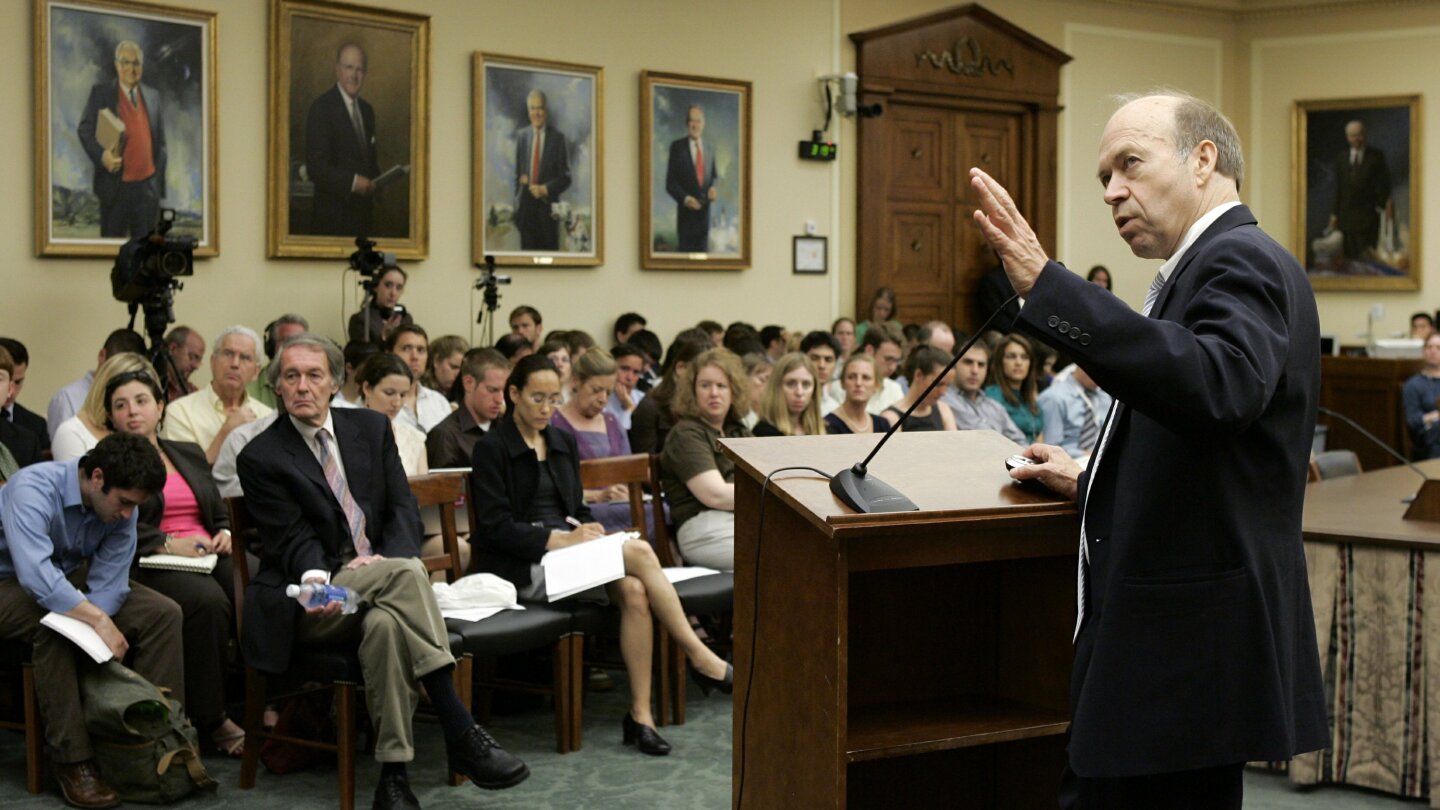James Hansen is back with another dire climate warning
11/02/2023
Climate scientist James Hansen is frustrated. And he’s worried.
For nearly 40 years, Hansen has been warning the world of the dangers of global warming. His testimony at a groundbreaking 1988 Senate hearing on the greenhouse effect helped inject the coming climate crisis into the public consciousness. And it helped make him one of the most influential climate scientists in the world.
Hansen has spent several decades as director of NASA’s Goddard Institute for Space Studies, and now at 82, he directs Columbia University’s Climate Science, Awareness and Solutions program.
In the years since his seminal testimony, many of Hansen’s basic scientific predictions about the Earth’s climate future have come true. Greenhouse gas emissions have grown, and global temperatures have continued to rise. The world’s glaciers and ice sheets are melting and sea level rise is accelerating.
But Hansen has been disappointed with the scientific community’s response to some of his more recent projections about the future of the warming Earth, which some researchers have characterized as unrealistically dire.
In particular, he was discouraged by the response to a paper he published in 2016, suggesting catastrophic ice melt in Greenland and Antarctica, with widespread global effects, may be possible with relatively modest future warming.
Many researchers said such outcomes were unlikely. But Hansen described the paper as some of his most important work and a warning about the need for more urgent action.
Now he’s bracing himself for a similar reaction to his latest paper, published Thursday morning.
“I expect the response to be characterized by scientific reticence,” he said in an email to E&E News.
The new paper, published in the research journal Oxford Open Climate Change, addresses a central question in modern climate science: How much will the Earth warm in response to future carbon emissions? It’s a metric known as “climate sensitivity,” or how sensitive the planet is to greenhouse gases in the atmosphere.
Hansen’s findings suggest the planet may warm faster than previous estimates have indicated. And while some experts say it’s possible, others suggest that he’s taken the results too far.
In studies, scientists often tackle the climate sensitivity question by investigating how much the Earth would warm if atmospheric carbon dioxide concentrations doubled their preindustrial levels. Prior to the industrial era, global CO2 levels hovered around 280 parts per million, meaning a doubling would land around 560 ppm.
Today’s CO2 levels have already climbed above 400 ppm, giving the question a growing relevance.
Climate sensitivity is a difficult metric to estimate. It hinges on a wide variety of feedback loops in the Earth’s climate system, which can speed up or slow down the planet’s warming.
As the Earth’s reflective glaciers and ice sheets melt, for instance, the planet can absorb more sunlight and warm at a faster rate. Forests and other natural ecosystems may absorb different amounts of carbon as the planet warms. Different types of clouds can both speed up or slow down global warming, and it’s still unclear how they will change as the Earth heats up.
The uncertainties around these factors have made it challenging for scientists to pin down an exact estimate for climate sensitivity. But they’ve chipped away at it in recent years.
For decades, studies generally suggested that the Earth should experience anywhere from 1.5 to 4.5 degrees Celsius of warming with a doubling of CO2. But a 2020 paper narrowed the range to between 2.6 and 3.9 C, using multiple lines of evidence including climate models, the Earth’s response to recent historical emissions and the Earth’s ancient climate history.
The latest assessment report from the U.N.’s Intergovernmental Panel on Climate Change adopted a similar estimate, suggesting a likely range of 2.5 to 4 C with a central estimate around 3 C.
Hansen’s new paper, published with an international group of co-authors, significantly ups the numbers. It suggests a central estimate of around 4.8 C, nearly 2 degrees higher than the IPCC’s figure.
The paper relies largely on evidence from Earth’s ancient climate history. One reason? It’s unclear whether current climate models accurately represent all the relevant feedback effects that may affect climate sensitivity, Hansen and his co-authors argue. The planet’s past provides a clearer view of how the Earth has responded to previous shifts in atmospheric carbon dioxide concentrations.
The paper also suggests that global warming is likely to proceed faster in the near term than previous studies have suggested.
Under the international Paris climate agreement, world leaders are striving to keep global warming well below 2 C and below 1.5 C if at all possible. The new paper warns that warming could exceed 1.5 C by the end of the 2020s and 2 C by 2050.
A gradual global decline in air pollution, driven by tightening environmental regulations, is part of the reasoning. Some types of air pollution are known to have a cooling effect on the climate, which may mask some of the impact of greenhouse gas emissions. As these aerosols decline in the atmosphere, some research suggests, this masking effect may fall away and global temperatures may rise at faster rates.
Hansen and his co-authors argue that better accounting for the declines in global aerosols should accelerate estimates of near-term global warming.
Studies suggest that warming between 1970 and 2010 likely proceeded at around 0.18 C per decade. Post-2010, the new paper argues, that figure should rise to 0.27 C.
The findings should motivate greater urgency to not only cut greenhouse gas emissions but to eventually lower global temperatures closer to their preindustrial levels, Hansen suggests. That means using natural resources and technological means to remove carbon dioxide from the atmosphere.
Hansen also suggests that a controversial form of geoengineering, known as solar radiation management, is likely warranted.
[..........]
In a new paper, the influential climate scientist argues the Earth may be more sensitive to greenhouse gases than previously thought. Others are less sure.

www.eenews.net

www.usmessageboard.com


